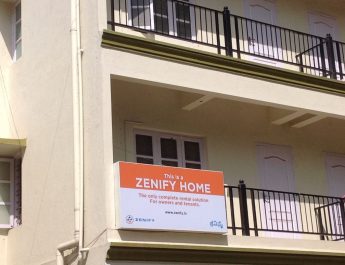We are living in a time where our natural environmental resources are in grave danger of not just getting diminished but may totally disappear in their original forms. The climate change that is being observed globally is a matter of serious concern. There cannot be enough emphasis on the fact that it is crucial for each industry and every individual to take necessary steps in conserving the natural resources and adopt a way of life that is eco-friendly. With environmental concerns under the radar, waste management and judicious use of natural resources has become the need as well as the talk of the hour.
While every industry has a significant role to play in conserving the environment, the healthcare industry is the one holding a major responsibility. Hospitals have always been the major consumers of energy / Energy guzzlers and experts believe they can also be the major conservationists of the same if they act responsibly.
Hospitals have often been known for generating a large amount of waste, both no degradable and biodegradable. From diagnosis to treatments or immunization to research, a large amount and variety of waste is produced from the hospitals using the instruments and techniques for disease treatments, making intensive use of energy in the form of light, water, space, heat, ventilation, humidity control & air-conditioning etc. for obvious reasons owing to the complex management structure that they deal with.
However, the good news is that hospitals and most of the industries have now started to come in the forefront of being sustainable consumers of energy. Columbia Asia hospital is one of the path-breaking medical set-up that is taking some major eco-friendly initiatives to preserve natural resources. By ensuring a good energy management structure, not only is Columbia Asia becoming an energy-efficient hospital but also has achieved substantial reduction in carbon emission & energy expenses without compromising on the quality of health care facilities. The environment favoring sustainable steps that the hospital is taking has also made a significant difference in the cost-efficiency of the hospital thus indirectly benefiting the patients in terms of healthcare expenses.
Below are some of the eco-friendly and green initiatives taken by Columbia Asia hospitals and how they are helping in reduction of carbon footprint & Operating costs.
Going GREEN
The energy demand for machineries /Equipment for our routine operations is met by solar energy source. The most ideal way to ensure clean power in a hospital is to have a long-term, renewable power from solar power generating farms thanks to the abundant supply of sunlight that we have at our disposal. Columbia Asia hospital uses 90% of solar power instead of conventional power source in Karnataka. A major incentive with solar power is also the financial return as they do not require any expensive machineries and are comparatively low maintenance. Also, with advanced metering systems of the solar panel, the payment is only for the deficit power consumed which significantly reduces the operational cost. This initiative results in reduction in carbon footprint to the tune of 8 million KgcO2e per annum (which is the CO2 emissions equivalent) at pan India Level.
Fossil fuel reduction
An extremely serious global concern currently is that of pollution in its many forms. Fossil fuels through various means are majorly responsible for a lot of emissions that further add to the pollution. To enhance long-term effectiveness, Columbia Asia is going 100% fossil fuel free for certain hospital utilities like Hot Water generation by replacing the conventional hot water generators to efficient Heat pumps & Hot water solar panels. This highlights the concern about the rising emission of these gases which is further depleting the ozone layer and also the possibility of complete depletion of these natural fuels in the near future. These initiatives are also turning extremely cost-effective with evolving time, saving money on Operational cost and maintenance. With the demand of energy increase, there is simultaneous increase in the demand of fossil fuels which further increases its cost as the availability reduces.
Green OT’s
30% of Columbia Asia’s hospitals have Green OT’s. Green Operation Theatres (OTs) will ensure an eco-friendly surrounding through environmentally-aided air flows – air conditioning systems, OT set up, anesthesia machines, types of volatile agents used, etc. All this will eventually reduce emissions and also facilitate better cost management as the expenditure is done through natural resources and can be done within one’s compound. It has also been estimated that the cost of generating power from natural resources is only coming down and getting cheaper compared to generally available systems.
Other Initiatives-easily implementable
Other energy-efficient solutions are Utilizing 100% LED lights for lighting solutions, variable Speed drives pumps all pumping solutions, organic waste converter for converting wet garbage to manure for the greeneries in the building.
Reduction of water consumption & Reuse of Sewage Treatment Plant usage (STP)
Reuse of STP water for flushing, Gardening & land Scaping, car parking floor washing, Cooling tower -air conditioning after tertiary & quaternary treatments of Sewage Treatment Plants (STPs) which facilitate removal of contaminating materials, further ensuring better water quality and health safety. STPs also comes with simple and easy installation steps and allow low maintenance as well as operation of the plant, and thereby reduce the overall costs as well Utilization of Flow restrictors for washrooms is another initiative to utilize water at optimal level.
With an efficient cost-management and sustainable approach to energy & water what Columbia Asia Hospital is doing through its eco-friendly initiatives must be taken as an example which many more hospitals in the medical industry should follow.




